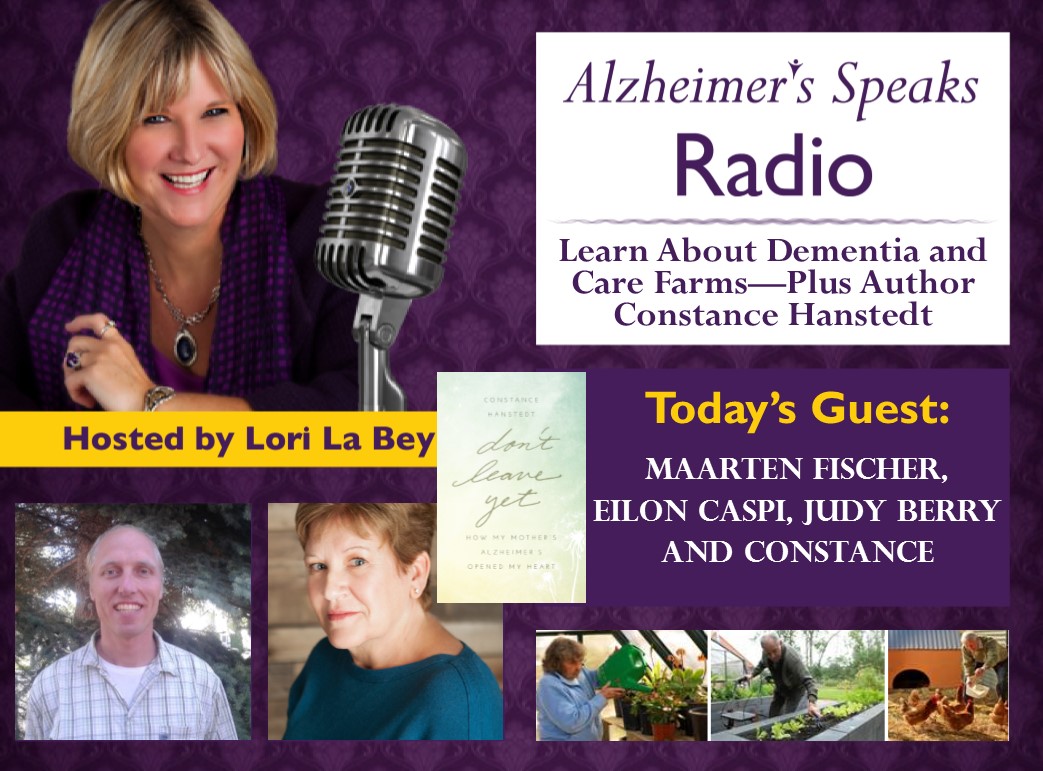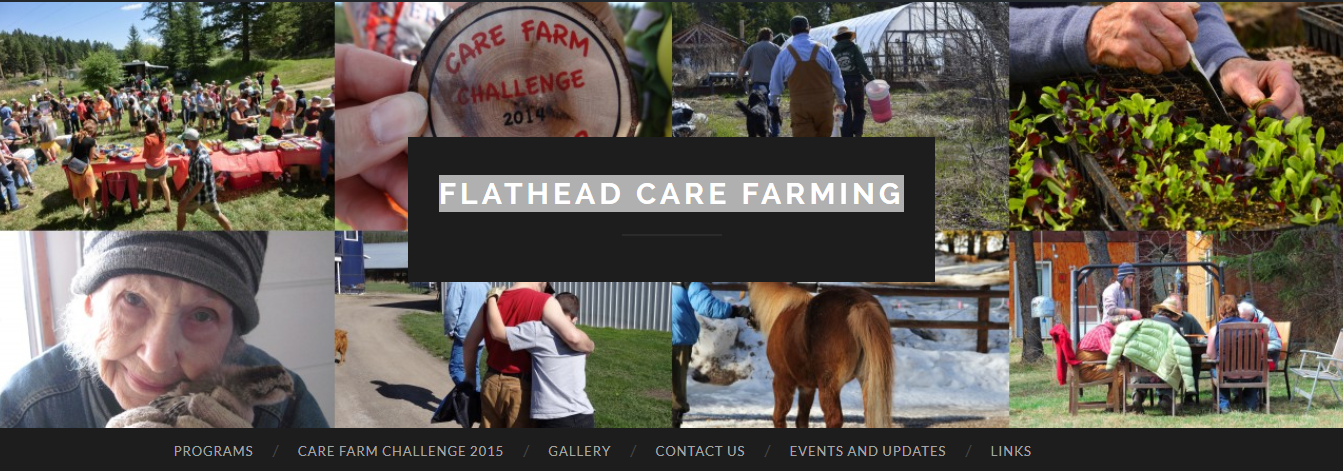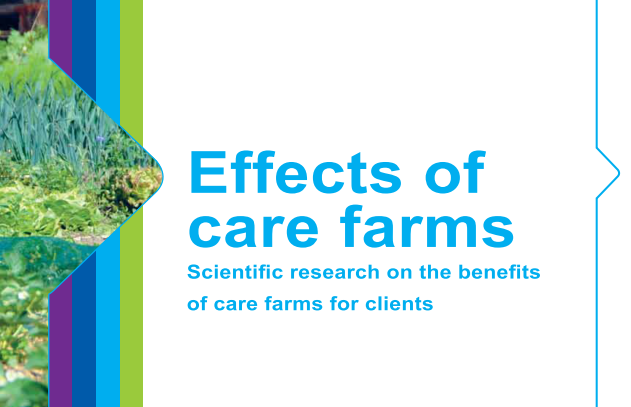Dementia Farms – Care Farms Additional Resources
Dementia Farms – Care Farms
Additional Resources
The level of interest in Alzheimer’s Speaks Radio show today on Care Farms had so many requests for additional resources for people to be able to check into, I decided we needed an additional post to include more information. So I hope this helps everyone who is interested in developing a Dementia/Care Farm; or just tapping into some of the benefits within your existing business or care environment.
Below you will find the replay of the show in case you missed.
 Email Maarten Fisher at mfischer@aplushc.com or call him at 406-752-3697
Email Maarten Fisher at mfischer@aplushc.com or call him at 406-752-3697
Or Check out the link Above To Watch a Video on Care Farms
 Click Below To Watch The Video
Click Below To Watch The Video
 Click Above for this 33 page Report
Click Above for this 33 page Report
 Click Above To Find Out About The Freedom Farm
Click Above To Find Out About The Freedom Farm
Click Above To Read
Below is a great article by Eilon Caspi, Ph. D. which details
Potential Therapeutic Benefits of Participation of
People with Dementia in Care Farms
Care farming is the combination of agricultural production with health and social services (Di Iacovo and O’Connor). The Care Farm is a novel, rapidly growing, and considerably diverse sector in the Netherlands and other European countries. It offers, among others, day care, supported workplaces, and residential places for clients with variety of disabilities.
Regularly attending and participating in various activities and chores on dementia-friendly Care Farms could enable people with dementia to realize a number of health, functional, psychological, social, and spiritual benefits.
A unique aspect of Care Farms is that many of the potential therapeutic benefits could be realized simultaneously and continuously. In other words, it is the combination of a variety and naturally integrated qualities of Care Farms that could make them effective in promoting the well-being and health of participants with dementia. This, in contrast to many traditional care settings where people with dementia live (either at home or in long-term care residences) and more isolated activities typically enable realizing relatively small number of these benefits at once (there are exceptions of course such as the Green House Model of the Eden Alternative (U.S.) and Arcare Helensvale (Australia), among other enlightened person-directed models of care for people living with dementia).
Selected examples of potential therapeutic benefits of participation of people with dementia in Care Farms include:
1. The various therapeutic health benefits of being outdoors and maintaining connections with nature (e.g., natural sunlight can help regulate sleep awake cycle and production of Vitamin D; enhancement of emotional well-being and restoration; opportunities to decompress; simply enjoying the flowers, birds, sun, and wind; physical relaxation; improved mood; and alleviation of depressive feelings). In addition, at a certain point in the disease, many people with dementia may be at risk of significant weight loss and dehydration. Regularly attending a Care Farm could improve food and fluid intake.
It is important to note that “nature” on farms is defined in broader terms than nature reserves (i.e., natural forests and wild nature). Specifically, it may include, among others, farmland, production forest, urban green spaces, and backyard gardens. In addition, to realize some of the benefits of being outdoors, people with dementia on Care Farms can simply look at nature from indoors. Many meaningful farm and household activities and chores could be performed indoors on Care Farms. This feature could be advantageous in general and on very cold or hot days when these individuals should avoid being in outdoors for extended periods.
2. Physical Activity. Working on a Care Farm offers many opportunities for naturally occurring physical activities. These include, among others, walking to the barn, doing household chores (such as meal preparation), raking the leaves, crafts (sanding or painting fences), gardening, planting, harvesting fruits and vegetables, and taking care of farm animals (such as cows, horses, pigs, chickens, goats, dogs, and cats).
3. Multisensory Stimulation. The inherent characteristics of farms and the wide variety of activities offered in many of them could enable persons with dementia to use all their senses (smell, taste, touch, hearing, and sight). Being in nature offers frequent spontaneous (“organic”) opportunities for using these senses. This inherent feature of Care Farms is important as many people with dementia especially those in mid-to-late stages are often deprived of adequate multisensory stimulation (both at home and in long-term care residences).
4. Doing the different chores on the Care Farm can give people with dementia the feeling that they are needed, useful, and contributing members of society. Feeling productive and helpful to others. Breaking down the vicious cycle of boredom many people with dementia experience in most nursing homes and in the community. Having true purpose and meaning in real life experiences and activities (without artificial situations commonly created in long-term care residences). Having a good reason to wake up in the morning!
5. Many grew up on farms, loved working in gardens, and enjoyed the company of pets. For these individuals, returning to a farm could be a natural continuation from their early life. The long-term memory remains relatively intact in many people with dementia well into the disease. Being on a Care Farm can help unlock cherished memories from the person’s distant past (a treasure chamber waiting to be opened). This means that plenty opportunities for personally meaningful reminiscence could be naturally provided to participants. When farmers take the time to know and use the life history of these individuals, the healing effects of these personal recollections could be further strengthened.
It should be emphasized that many people with dementia who did not grow on farms or did not have a garden or pets could still enjoy and benefit significantly from participation on Care Farms. Others who do not have background in farming, gardening, or working with animals/having pets, might experience the farm as a foreign place, which could lead to feelings of anxiety. So participation in Care Farms is not for all people with dementia. Interdisciplinary assessment at the individual level is key for determining whether a person may benefit from the program. Assessment should continue on an ongoing basis throughout the person’s participation in the program (in general and because of the changes caused by the progression of dementia).
Case Example
An older man with Alzheimer’s disease engaged in two-thirds of episodes of “aggressive” behaviors with other residents on the unit in which he lived (usually as the exhibitor of these behaviors). But once you gave him a chicken to hold in his arm during a pet therapy group activity, he was clearly content and emotional (you could see tears in his eyes when he recalled and shared experiences from as a child growing up on a farm). The preventative effect was clear: he did not engage in “aggressive” behaviors during this personally meaningful activity…
6. Plenty opportunities for learning and personal and occupational growth (yes, many people with dementia can learn well into their disease such as through repetition, practice, clear and consistent routine/structure, and especially when they are interested in and care about what they are doing and when the conditions for success, gentle guidance, and attentive cueing are provided to them). The broad and diverse range of activities and chores done on a Care Farms can promote choice, personalization, stronger sense of autonomy and identity, and varied opportunities for learning and growth (though these must always be adapted to the person’s current preferences and cognitive abilities and disabilities). For example, Care Farms offer natural opportunities for learning about the cycle of life – such as through watching the birth and death of farm animals. This integral part of life is often inadequately addressed or ignored in many nursing homes.
7. Working closely together with farmer(s) and peers may provide natural opportunities for socialization and friendships (with the farmer(s) and with peers). This, in turn could alleviate social isolation and feelings of loneliness. In addition, multi-function Care Farms serving different populations simultaneously offer unique opportunities for intergenerational connections. Specifically, these farms serve mixed client groups such as young people (even children) with a variety of disabilities (e.g., learning or intellectual disabilities, autism, down syndrome, mental illness) along with older adults in general and those with dementia. It should be emphasized, however, that given the unique manifestations and challenges caused by each of these and other conditions, adequate, timely, attentive, and skilled guidance and supervision must be provided to ensure that interactions remain positive (otherwise, in certain situations tensions between peers may occur).
8. The unique, personal, and humane approach of care farmers toward people with dementia is considered a big part of the success of Care Farms (Maarten Fischer, personal communication). Relating to these individuals as equals despite their cognitive and/or other disabilities could empower them in a time of their lives when they struggle to maintain their self-esteem and confidence in the face of an avalanche of losses. Genuinely appreciating their contributions to the farm could encourage participants to take on added responsibilities, which in turn may strengthen their sense of independence.
It is worth mentioning that close trusting relationships is by far the single most important asset we can have when working with and caring for people with dementia. Working together with the same farmer(s) over time can strengthen these relationships, reinforce a sense of reciprocity, and mutual appreciation.
To be successful in building these relationships, most farmers will need to receive high-quality dementia-specific training in areas such as: what it means to live with dementia, effective communication techniques and approaches, principles for engagement in meaningful activities, psychosocial strategies for preventing and de-escalating various behavioral expressions (including aggressive behaviors), knowledge of and ways to implement various features of dementia-friendly physical environment, and safety issues.
An encouraging trend in recent years in the Netherlands is that a growing number of employees or former employees in health care have started Care Farms (e.g., in the Netherlands, the initiators of new on-farm business are often women in general or farm women with a background in health care).
9. When planned and delivered well, engagement of people with dementia in the different activities and chores on Care Farms could help reduce various forms of behavioral expressions and promote positive emotional states. For example, it could lead to reduction in feelings of anxiety and “aggressive” behaviors and use of psychotropic medications (which are mostly ineffective, have many adverse and risky side effects, and are expensive).
10. Care Farms offer natural opportunities to meet the spiritual needs of people with dementia (such as through simply being, regular connections with nature, caring for animals, working in the fields, and growing and harvesting vegetables and fruits). While the spiritual needs of people with dementia are critical, this integral aspect of their psychological well-being is often overlooked in the community and in many long-term care residences.
11. Physical (Green) Environment. Many farms are normal in character and naturally set up in ways that could give the person with dementia a sense of being at home. Substantial portion of Care Farms are also “small-scale,” an environmental feature which is known to be beneficial in this population. To ensure that the farm is dementia-friendly, other features of the physical environment must be evaluated and addressed. These include, among others, provision of adequate lighting, avoidance of glare, avoidance of excessive noise, inadequate outdoors and indoor temperatures (too cold/too hot), optimal levels of stimulation (to avoid causing the person to feel overwhelmed), elimination of distracting clutter, reduction of uneven walking surfaces that contribute to falls, and use of clear signage (with dementia-friendly font and contrast) to increase their ability to successfully navigate their way around the farm.
12. The combination of strength-based and empowerment-oriented approach along with the “normal life” characteristics (i.e., informal non-medical atmosphere) of Care Farms dedicated to people with dementia could assist in reducing the widely-held and harmful stigma experienced by many people living with the disease. How many times we hear people living with dementia refusing to attend a day center or moving to a traditional nursing home?
13. Respite for Family Care Partners. Regular participation of people with dementia in Care Farms can provide sorely needed “time off” for family members; many of whom desperately need a break from the exhausting tasks of caring for and/or supervising their loved ones. While their relatives participate on Care Farms, family members can use these times to rest, recharge, run errands, meet friends, exercise, and engage in their favorable leisure activities. This, in turn could alleviate feelings of isolation and burnout commonly experienced by family care partners, which could strengthen their ability to provide more effective care to these individuals.
Safety Considerations
Prior to any engagement of people with dementia on Care Farms, adequate measures and procedures must be developed (in writing) and put in place to ensure the safety of these vulnerable individuals. Significant number of people with dementia (even in the early stages of the disease) may experience limitations and/or serious cognitive disabilities leading to inadequate or poor judgment of unsafe situations.
Selected examples of potential risks may include falls (people with dementia are at increased risk of falls compared to cognitively healthy individuals), getting lost (due to visuospatial disorientation/wayfinding difficulties), injuries caused by difficulty or inability operating various devices on the farm, mishandling sharp objects, or being in close proximity to electric devices and agriculture vehicles. Certain individuals with dementia may try to eat inedible items (such as dirt or poisonous plants) or drink cleaning and other poisonous liquids. Others may insist on staying outside in the sun on very hot days for long periods without putting sunscreen on and hat with wide margins. Research is needed to identify the full spectrum of potential and actual safety risks for participation of people with dementia on care farms. The knowledge generated in these studies could inform development and implementation of dementia-friendly and safe Care Farm programs.
Beyond those caused by dementia, limitations and disabilities caused by the aging process (e.g., physical; functional; hearing; vision; chronic diseases, etc.) must be proactively evaluated, identified, and addressed and compensated for in a timely manner.
Careful and routine evaluation and written documentation of these physical and cognitive limitations/disabilities is key for implementation of safe and dementia-friendly Care Farm programs for people living with dementia. The evaluation must be ongoing because dementia is a moving target as abilities and disabilities change over time. As importantly, evaluation must include identification of remaining abilities and strengths of participants with dementia. Insights gleaned from these evaluations need to inform efforts aimed at engaging these individuals in personally meaningful and enjoyable activities and chores on Care Farms.
Policy Recommendation
Could this major gap in services for people with dementia be bridged by implementation of large-scale financial reimbursement mechanisms and other incentives that would encourage farmers to develop and offer Care Farm programs for this vulnerable population?
The information in this document is partially based on these sources:
Bruin et al. (2010). The concept of green care farms for older people with dementia. Dementia, 9(1), 79-128.
Bruin et al. (2009). Day care at green care farms: A novel way to stimulate dietary intake of community-dwelling older people with dementia? The Journal of Nutrition, Health, & Aging, 14(5), 352-357.
Bruin et al. (2009). Green care farms promote activity among elderly people with dementia. Journal of Housing for the Elderly, 23, 368-389.
Hassink et al. (2010). Care farms in the Netherlands: Attractive empowerment-oriented and strengths-based practices in the community. Health & Place, 16, 423-430.
Hassink et al. (2012). Care farms in the Netherlands: An unexplored example of multifunctional agriculture – Toward an empirically grounded, organization-theory-based typology. Rural Sociology, 77(4), 569-600.
Schols & van der Schriek-van Meel (2006). Day care for demented elderly in a dairy farm setting. JAMDA, 7, 456-459.
* Special thanks to Maarten Fischer for inspiring me to learn more about this innovative model during his presentation on this topic at the 2014 Gerontological Society of America Annual Scientific Meeting in Washington D.C., generously giving me an informative and moving tour in several pioneering and visionary Care Farms with whom he collaborates in Montana, sharing the above research articles with me, and for his helpful feedback and suggestions for improving this document.
Website E-mail: eiloncaspi@gmail.com




One Reply to “Dementia Farms – Care Farms Additional Resources”